At the beginning of the month, inspired by a random comment I’d made on X, and enjoying The Recipe Graveyard here on Substack, I started posting collages of my oldest cookbooks. Small, personal histories happen in the kitchen, and these books capture snapshots of time that allow me to look back and imagine how it was. They have also led to me rediscovering some authors I wasn’t expecting, had fond memories of, and learning more about them than I’d ever known!
Many of these books I’ve owned for a few years, since I started to rebuild my collection after nearly losing all my cookbooks during the move out of NH to Ohio. Some of them I have picked up on a whim at yard sales, the library sales, or for a while, from a friend who would contact me to ask ‘would you like…’ and yes, I would like to buy that from him.
I don’t know why I hadn’t made the connection between Kate Douglas Wiggin and a children’s classic in fiction before I photographed the book… but there it is, the author of Rebecca of Sunnybrook Farm and Mother Carey’s Chickens not only introduced this book, but she held the copyright (under her married name) and likely self-published it as well. Inspiring!
It seems that many of the books in my collection were published by a company as part of their sales and marketing for a product. Baking powder books were common, as the leavening agent was relatively new. Also, these would have been intended as branding, to keep women faithful to their familiar names.
Always, for me, I’m looking for the element of the personal touch in a cookbook. Here, a woman jotted a note in a recipe where she’d made her own tweak to it. Paste, by the way, seems to have been in vogue where we might say pastry, or even crust.
I included Cooley’s even though I never intend to make any of the recipes from it. It would have been an important resource for a chemist, in the late years of the nineteenth century, and as a modern chemist and cook I find it fascinating, sometimes appalling, and a window into what medicine used to be. Also, the understanding of fruits, vegetables, and what looks to be a way to age… something. Hopefully not people.
The International Cook Book, published in 1929, gives us a glimpse of the glamour of a world that was about to splinter into irreparable ruin. The elegance of these table settings would fade away for many years, and the styles that did return, after depression and war, were very different.
By contrast, the Pictorial Review Standard Cook Book published in 1933 gives us a look into the kitchen during the height of the Great Depression. A couple of these recipes amused me - the Jelly-Nut Sandwiches for instance! Tomato Aspic is an early forerunner of jellied terrors a couple of decades later.
Today’s book is another baking powder pitch, which seems to have been a giveaway for the company, or for $0.25 you could get the deluxe version I own above, with it’s cloth binding. I didn’t recognize the name of the lady recommending it, in 1893, so looked her up. I realized I knew who she was - or rather, her youngest son. Albert Payson Terhune followed in her footsteps, writing fiction, where his mother had written prolifically both household books and fiction (mostly romance). I knew him for his dog books which I had loved as a child. They are sentimental, but sweet and loving.
I am very much enjoying this little project, which doesn’t take much time (important right now!) and has me contemplating my collection with fresh eyes. It is very interesting to see how recipes change, and how these books feel like little time capsules full of authentic and unselfconscious history.





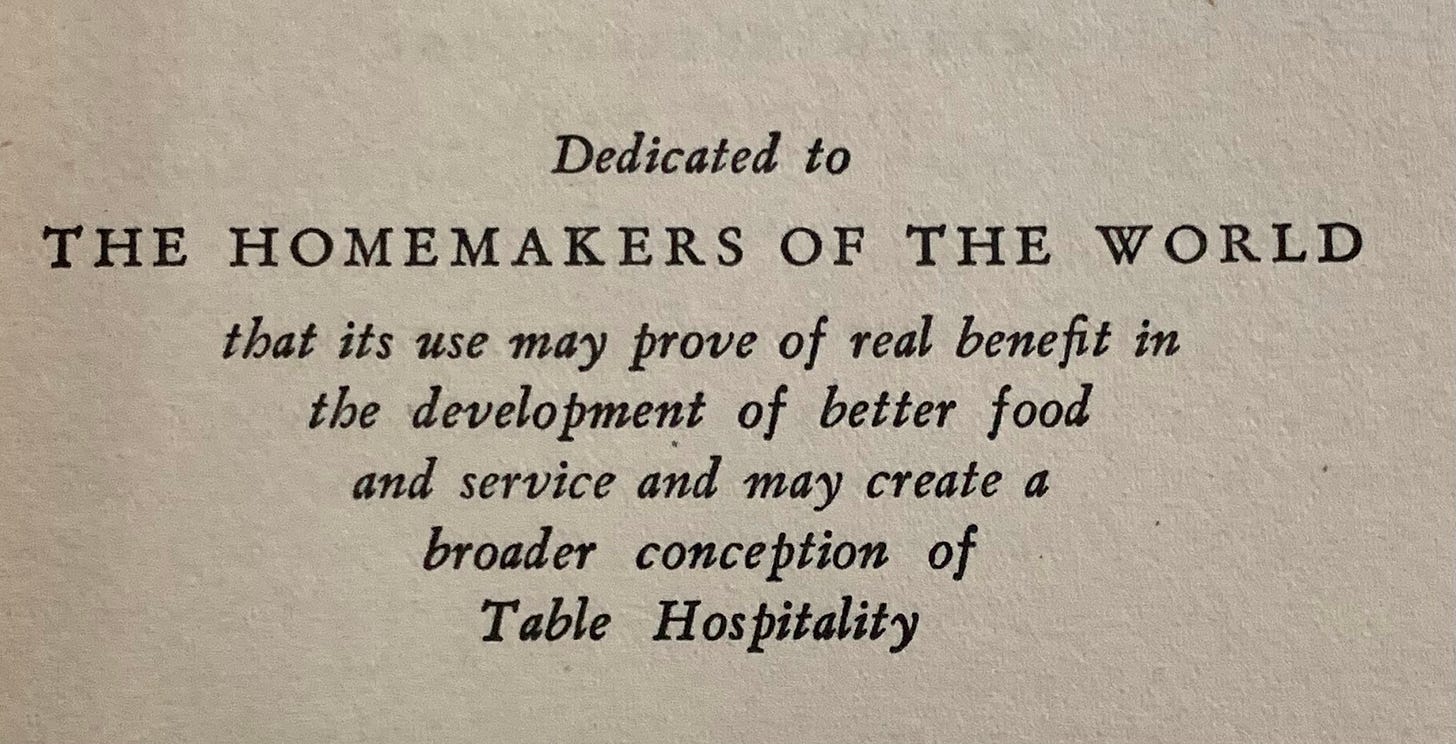
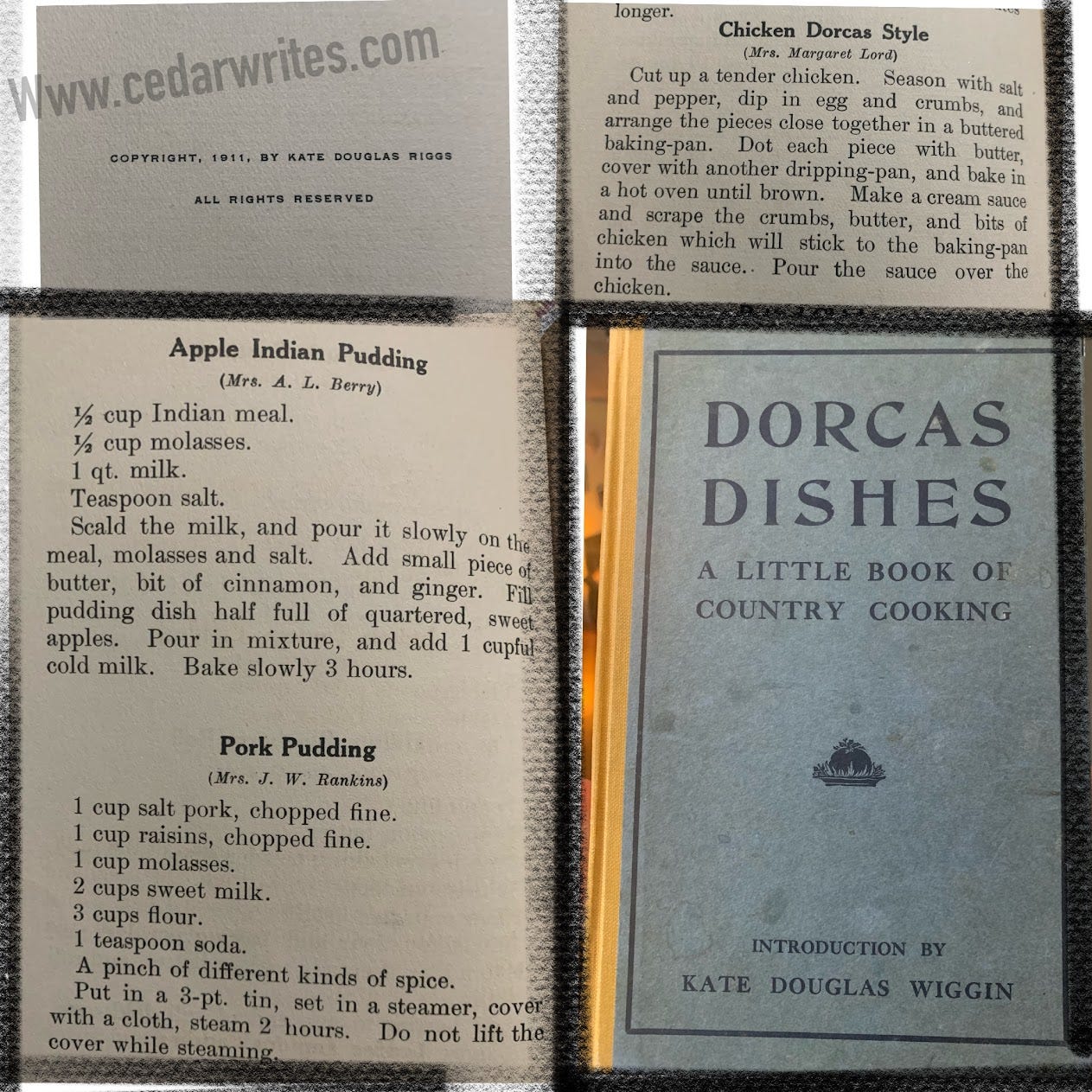
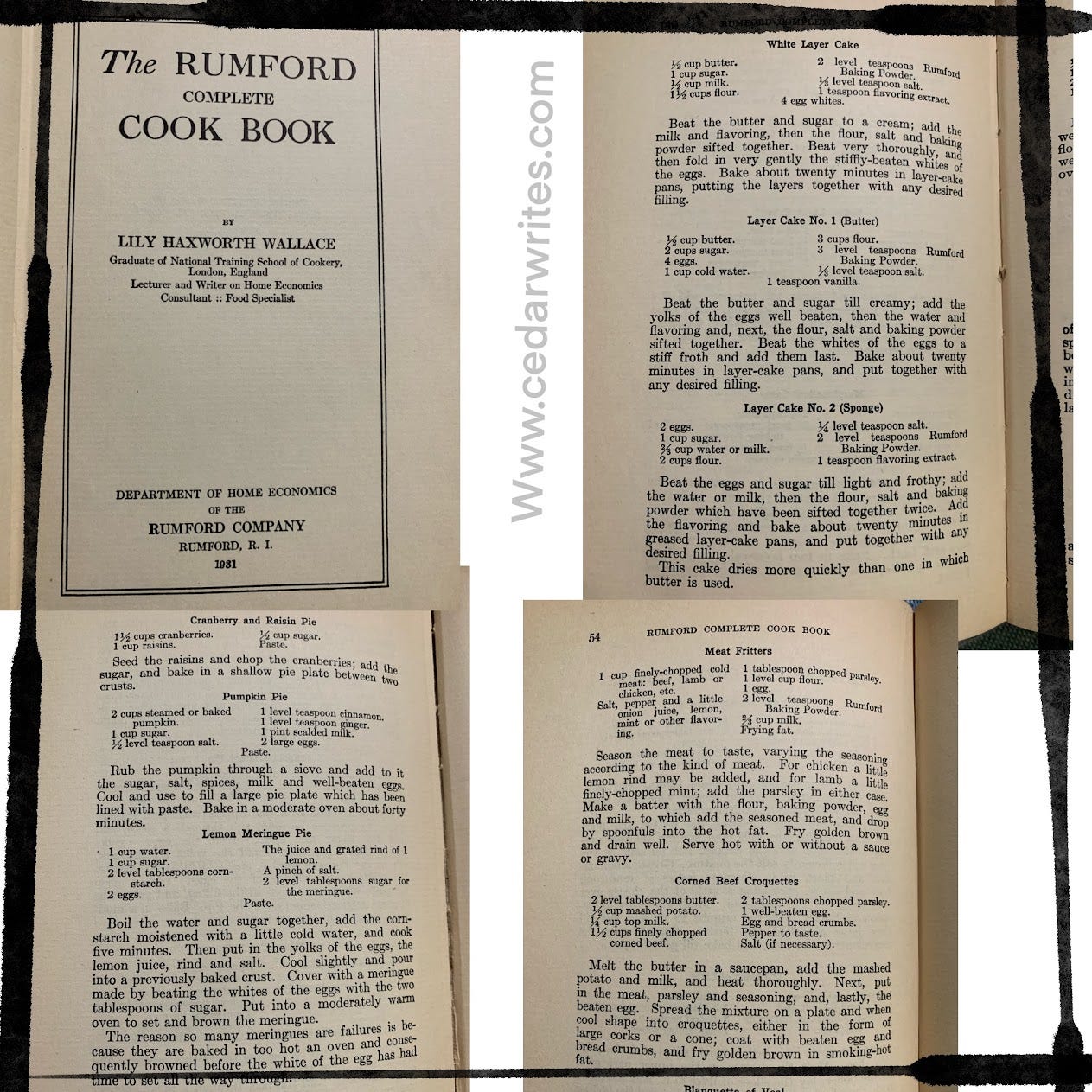
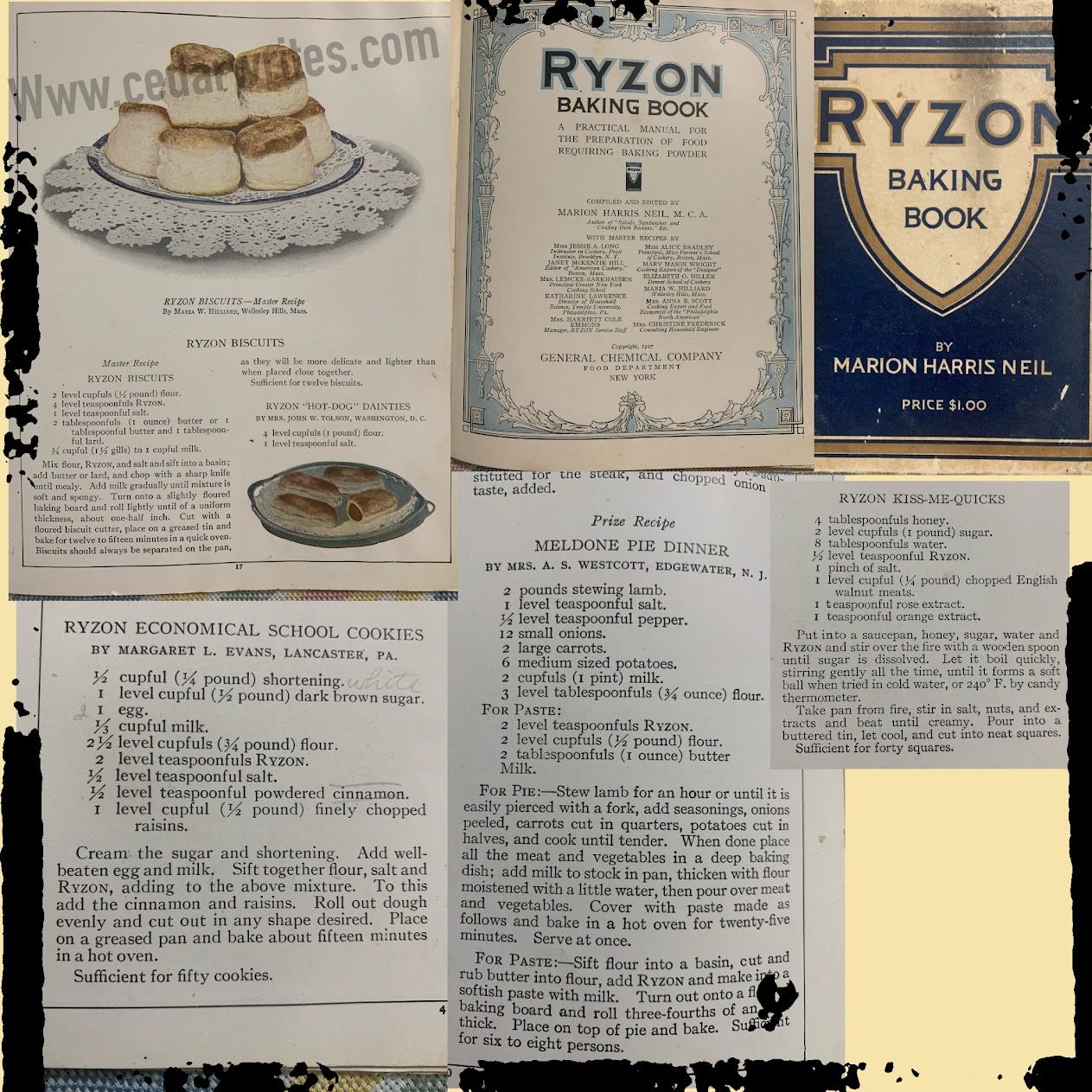
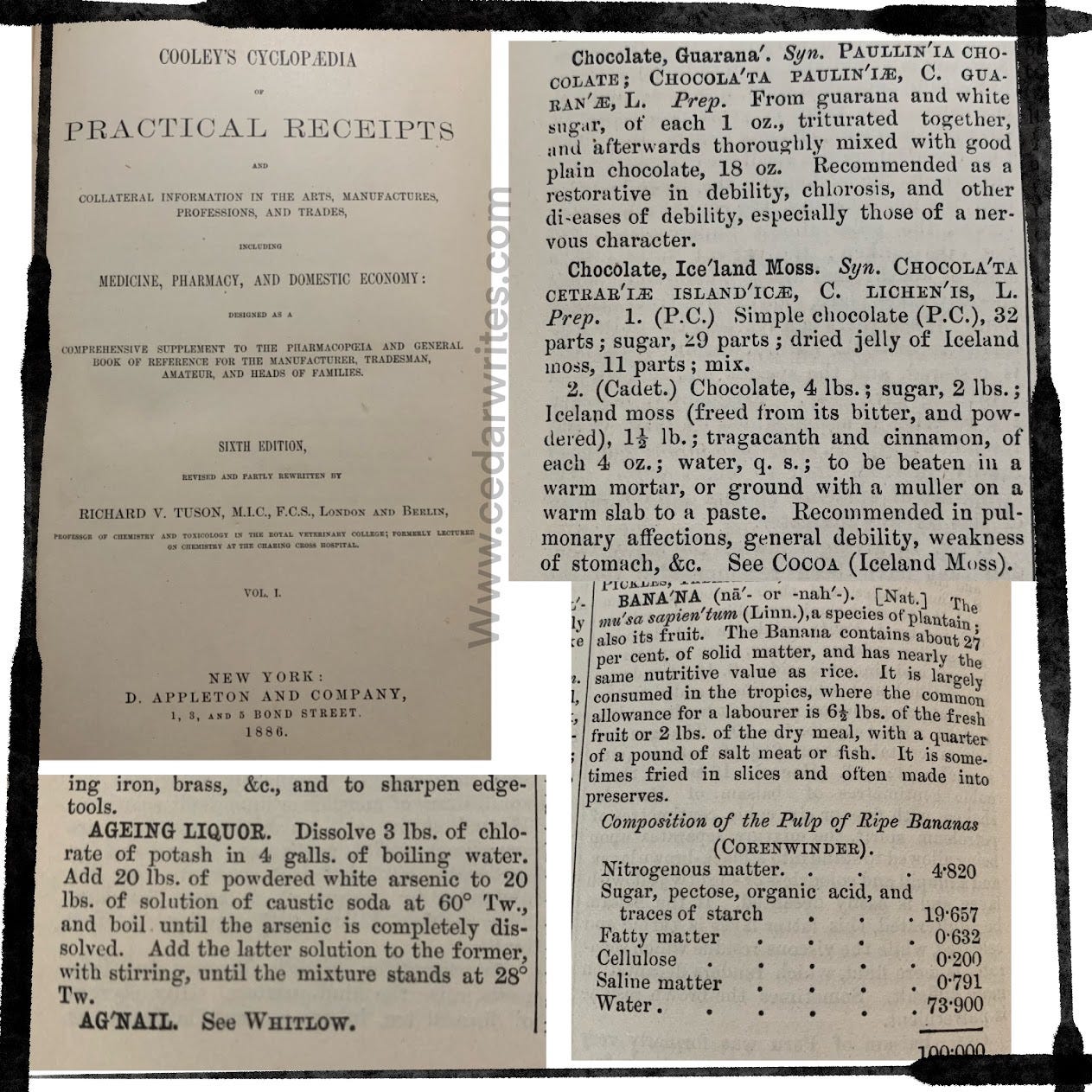
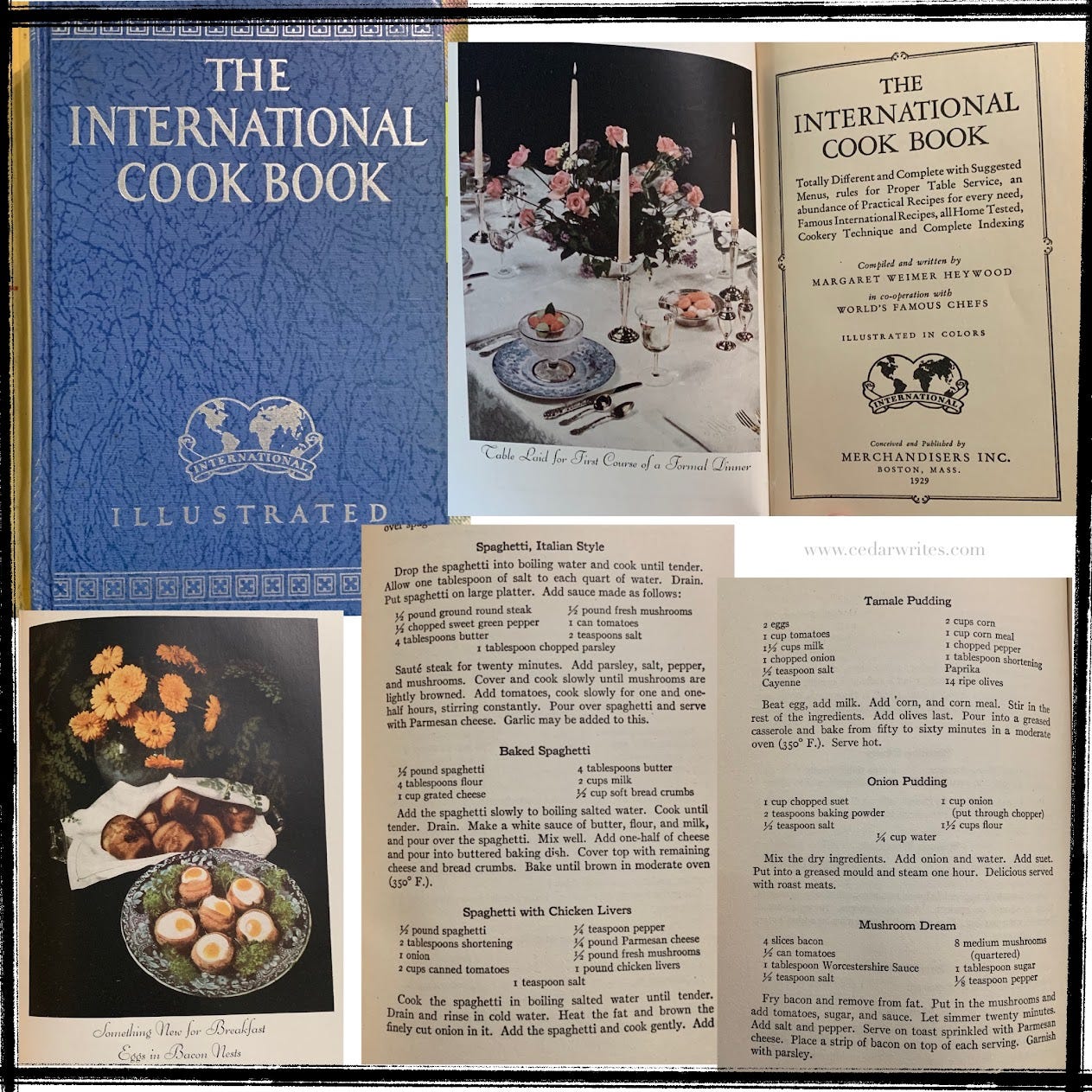
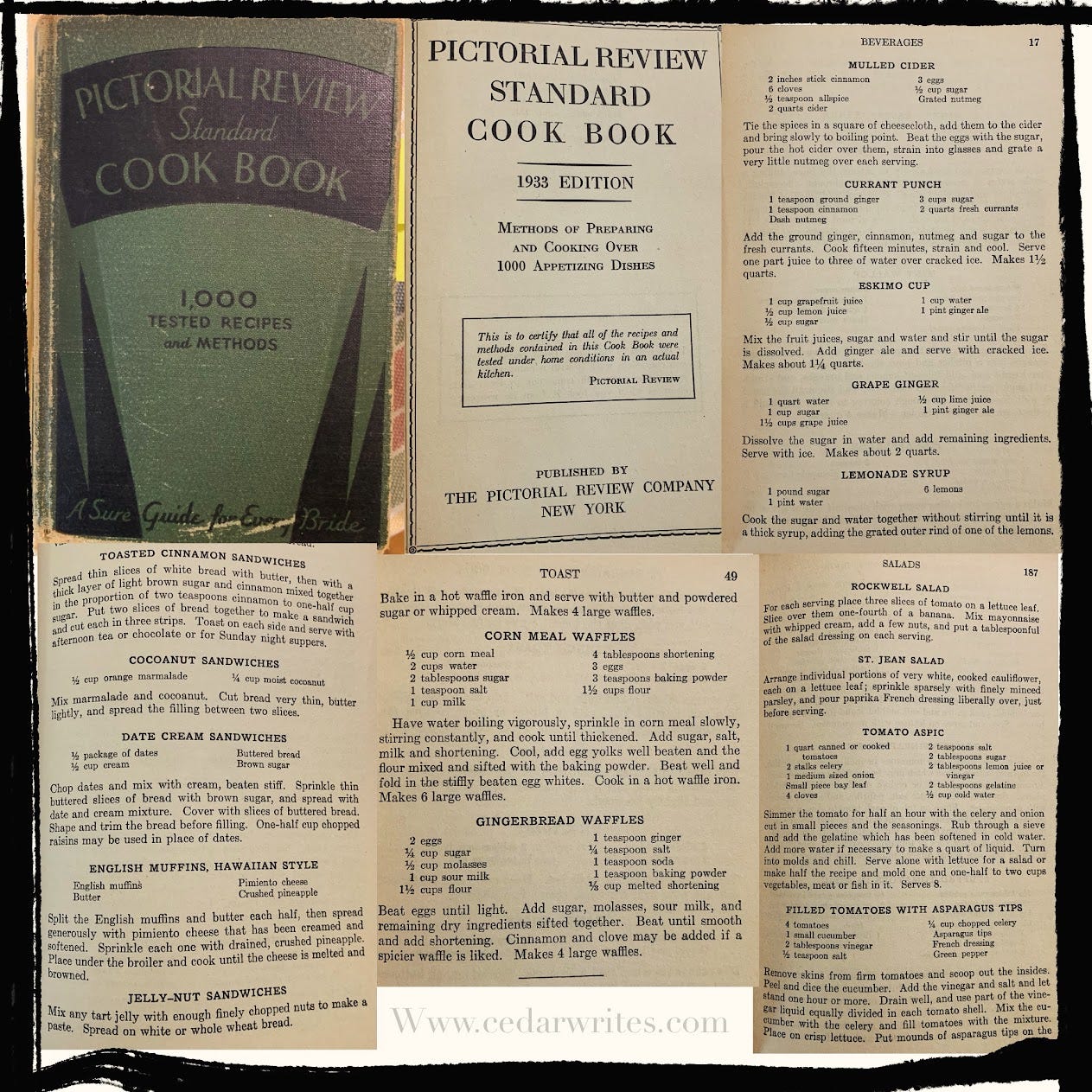
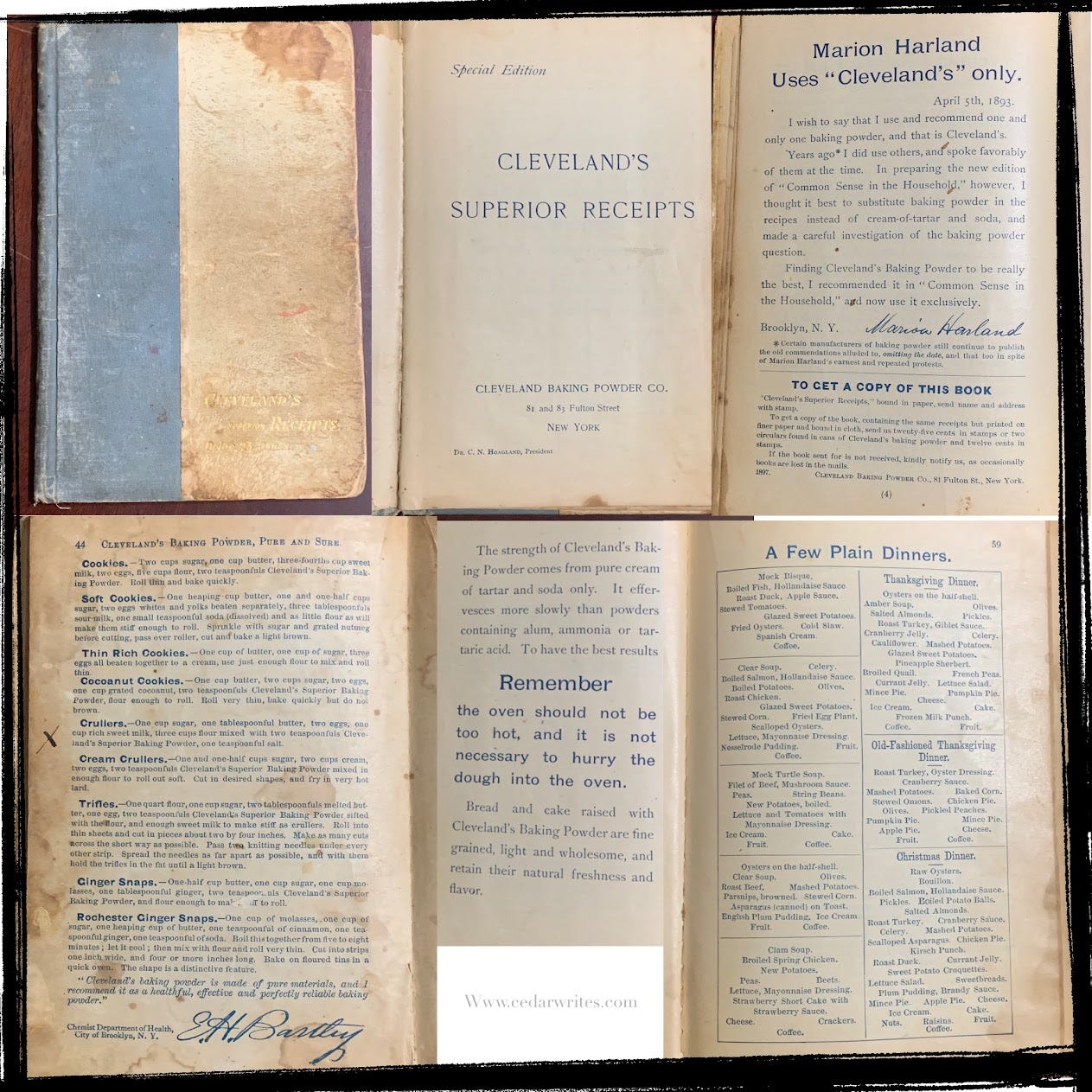
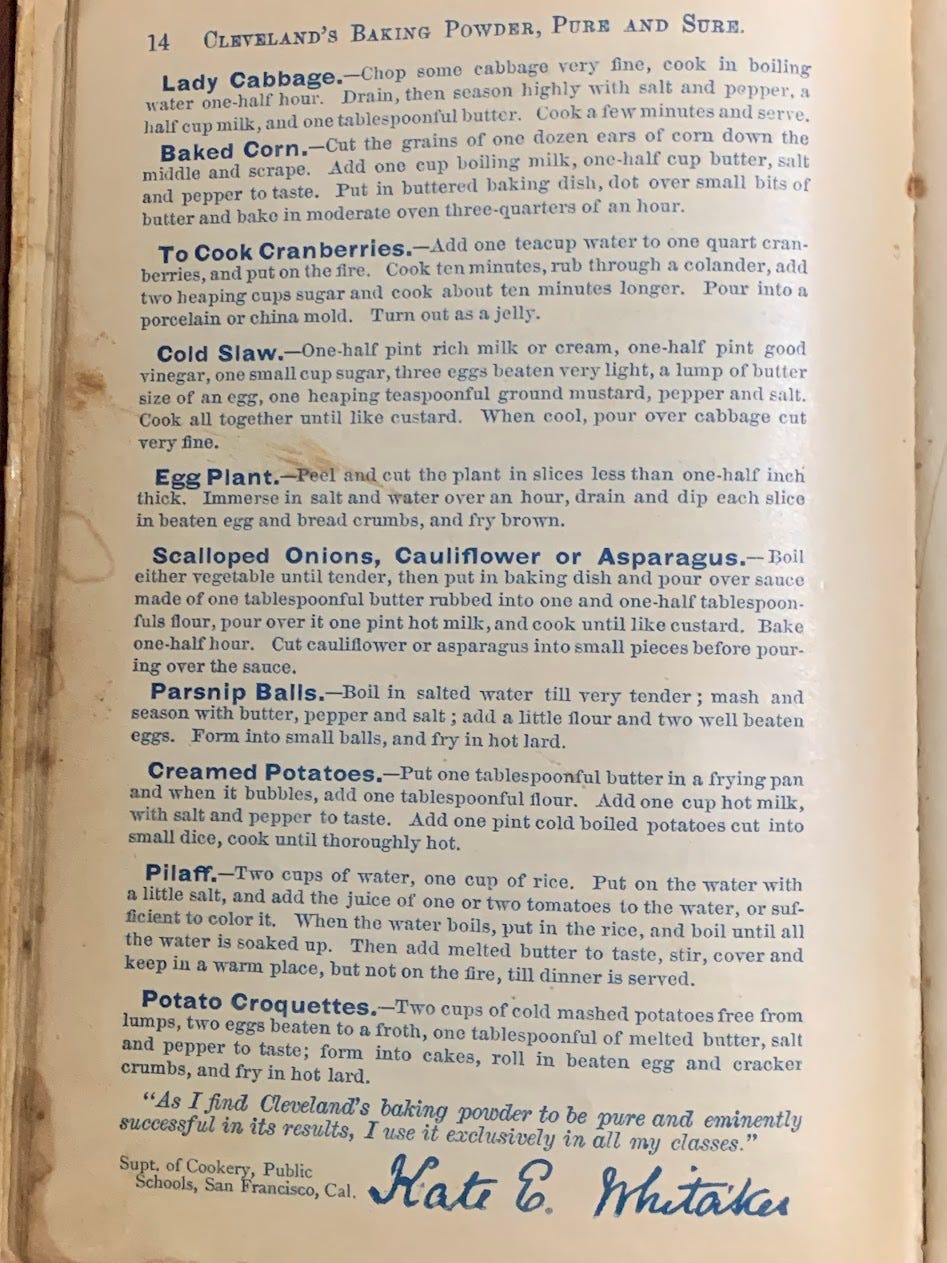
My best friend inherited a cookbook from her grandmother—for cooking on a wood-burning stove. It says great things like: “use apple wood, medium-hot oven”. I’ve been trying to get it away from her for years.
Same same. My main cookbook is my great-grandmother’s 1939 volume.